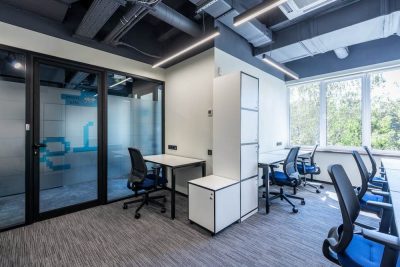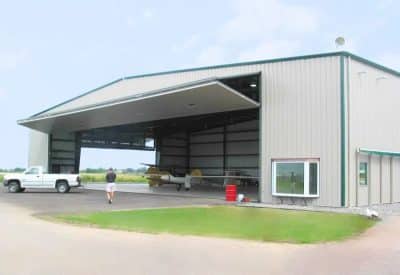
Transform your classroom into a modern learning space today!
Appropriate school desk design choices play a crucial role in building productive and captivating educational spaces. Based on recent market research from Grandview Research showing a projected growth rate of 4.8% CAGR through 2030 for the U.S. education furniture market valued at USD 3,793.7 million in 2023 schools are directing more attention towards innovative furniture solutions.
But here’s the thing…
Selecting an appropriate desk design extends beyond aesthetics because it shapes environments that support learning enhancement and promote student collaboration and wellbeing. An exploration of the extensive variety of student desks available today reveals transformative options that will redefine student learning and interaction.
Getting Started With This Guide:
- Understanding Modern Learning Space Needs
- Essential Features of Today’s School Desks
- Top Innovative Desk Styles
- Implementation Best Practices
- Maintenance Guidelines
- Future Trends and Considerations
Understanding Modern Learning Space Needs
The conventional approach of using identical school desks for every student fails to support contemporary educational methods. Modern learning spaces must support adaptability while promoting teamwork and technology integration. The U.S. had 129,000 public and private schools in the 2022-2023 academic year which has created rising demand for adaptable furniture solutions that support various teaching approaches.
The education furniture market in 2023 is controlled by the classroom furniture sector which generates more than 49% of total revenue. The substantial market share demonstrates how educators now understand that appropriate desk design positively affects student participation and academic achievements.
Modern school desks need to accommodate:
- Individual and group work configurations
- Technology integration with power access
- Various teaching styles and learning activities
- Student comfort and ergonomic needs
- Space efficiency and storage solutions
Essential Features of Today’s School Desks
What makes a school desk truly innovative? We will investigate the core elements that convert ordinary classroom furniture into versatile learning solutions.
Ergonomic Design
Latest desk designs focus on creating comfortable environments and supporting correct sitting positions for students. Key ergonomic features include:
- Adjustable height settings for different student sizes
- Curved edges to reduce pressure points
- Tilted work surfaces for better viewing angles
- Supportive seating with proper back alignment
- Footrests for improved circulation
Flexibility and Mobility
Modern desks require swift adaptability to accommodate various educational situations. Popular features include:
- Castors for easy movement
- Modular designs that can connect or separate
- Foldable or nestable components for storage
- Adjustable work surface angles
- Quick-release mechanisms for rapid reconfiguration
Technology Integration
The U.S. Department of Education received USD 195.44 billion in FY23 which led to schools making more investments in technology-enabled furniture. Modern desk features include:
- Built-in power outlets and USB ports
- Cable management systems
- Device charging stations
- Tablet/laptop stands and holders
- Interactive surface capabilities
Top Innovative Desk Styles
Between 2024 and 2030 U.S. colleges and universities will experience furniture demand growth at a CAGR of 5.4% because versatile learning spaces require more furniture. We will examine the cutting-edge desk designs transforming contemporary classrooms today.
Collaborative Cluster Desks
These innovative desks are designed to promote student interaction and group work:
- These shapes are modular and can be arranged in multiple configurations.
- Shared workspace in the center
- Individual writing surfaces for each student
- Easy to separate for individual work
- Integrated storage solutions for group materials
Active Learning Stations
Standing desks and adjustable-height workstations are gaining popularity in educational settings:
- Height-adjustable surfaces for sitting or standing
- Fidget bars and movement features
- Balance board integration options
- Multiple working positions
- Enhanced student engagement through movement
Maker Space Workstations
With laboratory furniture sales projected to grow at a CAGR of 5.1% from 2024 to 2030, specialized desk designs for hands-on learning are becoming essential:
- Durable, chemical-resistant surfaces
- Built-in tool storage
- Extra workspace for projects
- Safety features like rounded corners
- Mobile design for flexible room arrangements
Implementation Best Practices
The key to an effective learning environment lies in strategic desk implementation rather than just selecting the right desks. Here’s how to maximize the impact of your innovative desk designs:
Space Planning
Before implementing new desk designs, consider these crucial factors:
- Traffic flow patterns for easy movement
- Sight lines to teaching areas
- Natural light optimization
- Emergency exit accessibility
- Proper spacing between workstations
Flexible Configurations
Modern classrooms need to transform quickly between different learning modes:
- Individual study arrangements
- Small group formations
- Full class discussions
- Presentation setups
- Testing configurations
Implementation Timeline
When introducing new desk designs, follow these best practices:
Begin by launching a pilot program that tests new desk designs in selected classrooms.
- Gather feedback from teachers and students
- Make adjustments based on real-world usage
- Scale implementation gradually
- Provide training on desk features and configurations
Maintenance Guidelines
The lifespan of your school desk investment relies almost entirely on proper maintenance and care. Here’s how to protect your investment:
Daily Care
To maintain the functionality and appearance of modern school desks:
- Wipe surfaces clean daily with appropriate cleaners
- Check and tighten any loose components
- Inspect moving parts for proper operation
- Report any damage promptly
- Keep technology ports free of debris
Preventive Maintenance Schedule
Establish a regular maintenance schedule to prevent issues before they arise:
- Weekly component checks
- Monthly deep cleaning
- Quarterly mechanical inspections
- Semi-annual professional servicing
- Annual comprehensive assessment
Future Trends and Considerations
The education furniture landscape continues to evolve. Here are the emerging trends shaping the future of school desk design:
Smart Integration
The next generation of school desks will feature:
- IoT-enabled tracking and usage analytics
- Built-in digital displays
- Wireless charging capabilities
- Environmental sensors
- Automated height adjustment
Sustainable Materials
Environmental consciousness is driving innovation in desk materials:
- Recycled and recyclable components
- Low-emission manufacturing processes
- Biodegradable materials
- Locally sourced materials
- Extended product lifecycles
Adaptive Learning Spaces
Future desk designs will increasingly focus on:
- Biophilic elements for connection with nature
- Color psychology for optimal learning
- Acoustic management features
- Climate-responsive materials
- Multi-sensory engagement options
Bringing It All Together
Innovative school desk designs represent an investment in educational environments that promote modern learning methods and improve student success. The evolution of educational methods demands a more flexible selection of student desks with technology features to achieve successful classroom outcomes.
Remember that the best desk design is one that:
- Adapts to various teaching and learning styles
- Supports student health and comfort
- Integrates seamlessly with technology
- Promotes collaboration and engagement
- Maintains durability and longevity
Ready to transform your learning environment? Start by performing a complete evaluation of your existing furniture setup and pinpointing main areas that need enhancement. Identify your educational space requirements and limitations then search for solutions through established educational furniture vendors. Set up a pilot program in one classroom to evaluate different desk designs before investing more broadly. You can collect important feedback to make knowledgeable choices about larger implementation through this approach.








